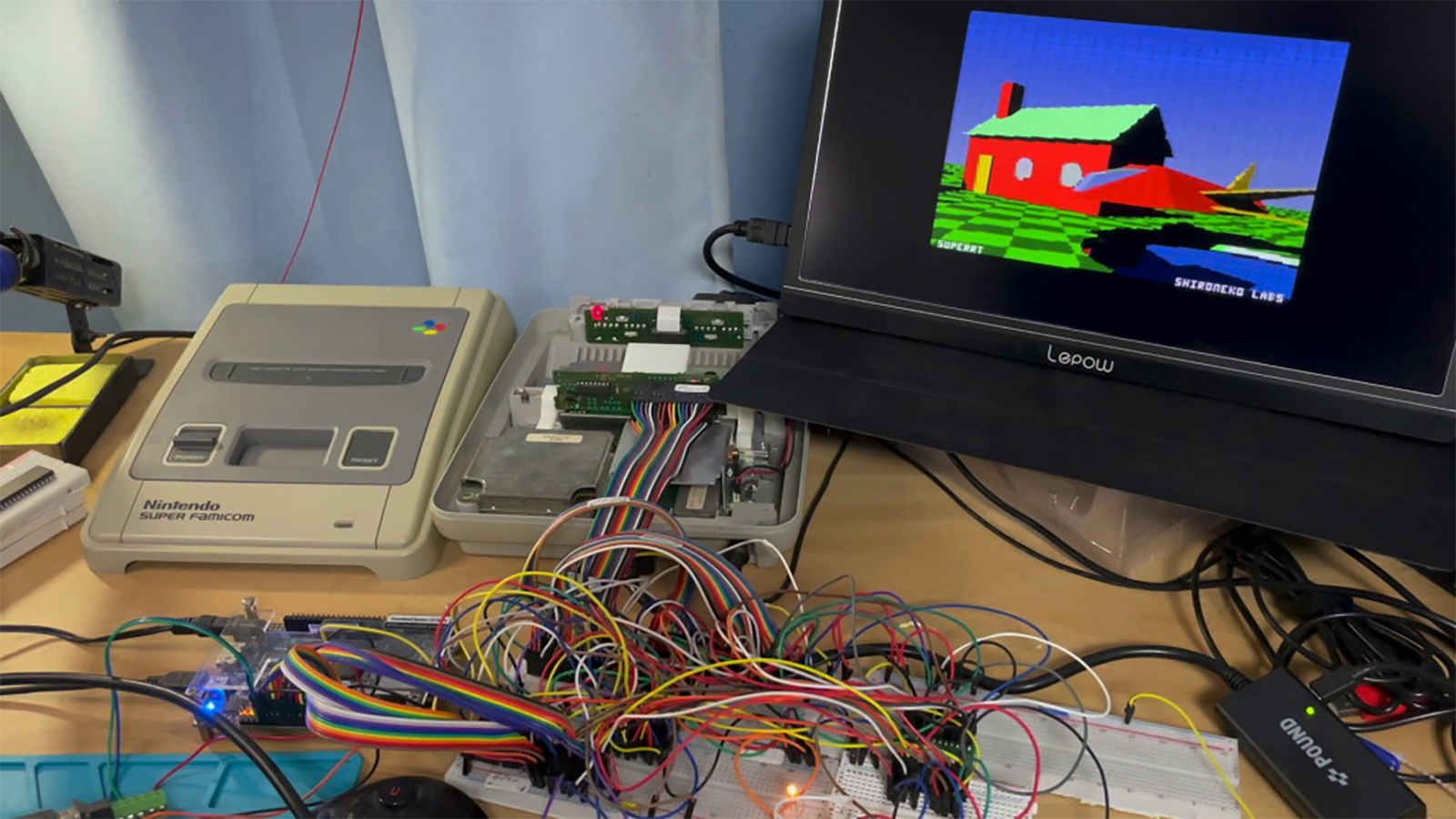Can't find PS5 or Xbox Series X? It turns out you can get ray-tracing on an SNES

If you haven't had any luck getting yourself a PS5 or Xbox Series X, it turns out ray-traced console gaming might be just an attic away thanks to a homebrew modification that adds real-time ray-tracing on the venerable SNES.
A project engineered by game developer and software engineer Ben Carter, SuperRT takes advantage of the same technique employed by the SuperFX chip found in game cartridges like Star Fox and Super Mario World 2: Yoshi's Island.
When the SuperFX chip is available, the console passes off advanced 2D and 3D polygonal graphics processing to the chip embedded in the cartridge while the console's CPU handles the game logic.
Carter's SuperRT mod uses the same co-processor arrangement, but instead of just passing the SNES console rudimentary 3D graphics, SuperRT passes ray-traced polygons with realistic shadows and reflections.
Needless to say, the results are very impressive in an old-school 16-bit, golden era gaming kind of way. You can see Carter's demo below to see it in action.
- Miss your SNES? Check out our SNES Classic Mini review
- Where to buy PS5: more stock coming soon
- Where to buy Xbox Series X: more stock coming soon
SuperRT demonstrates how older tech is more capable than most people realize
If you're hoping to try it out for yourself, Wffctech points out that you're almost certainly out of luck. Thanks to the Digital Millennium Copyright Act, if you want to get ray-tracing on the SNES, you'd have to rig the console up yourself and program the game that takes advantage of it the way Carter did - and even then, it's a legally dicey proposition since it's illegal to jailbreak video game consoles.
Leaving all that aside, as a technical exercise, Carter's SuperRT is a pretty astounding achievement. Carter has another YouTube video that goes into more detail about how he pulled off this feat of engineering if you're interested in the more technical details of the chip.
Sign up for breaking news, reviews, opinion, top tech deals, and more.
But for you couple dozen homebrew chipmakers out there looking to replicate his process, you'd have to do a lot of the heavy lifting without spec documents or anything like that. And we really can't stress this enough: you really don't want to get Nintendo's attention when it comes to this sort of thing - they really don't like people messing with their consoles.
Still, Carter's SuperRT demonstrates that even 30 year-old technology can be repurposed with some ingenuity to do some really remarkable things that you wouldn't think they'd be able to do, even if we're probably not going to get a fancy new 16-bit ray-traced Star Fox anytime soon.

John (He/Him) is the Components Editor here at TechRadar and he is also a programmer, gamer, activist, and Brooklyn College alum currently living in Brooklyn, NY.
Named by the CTA as a CES 2020 Media Trailblazer for his science and technology reporting, John specializes in all areas of computer science, including industry news, hardware reviews, PC gaming, as well as general science writing and the social impact of the tech industry.
You can find him online on Bluesky @johnloeffler.bsky.social
